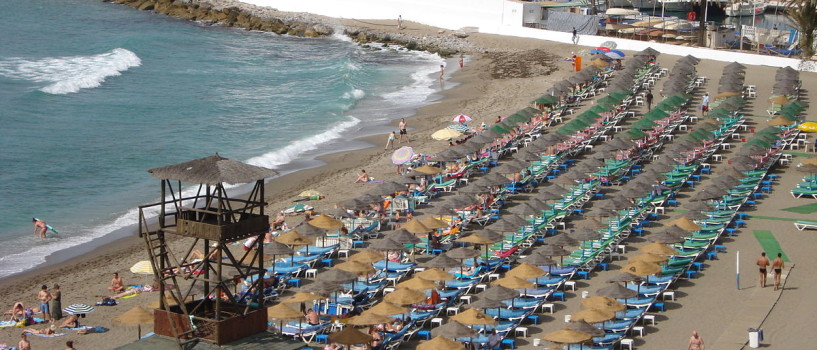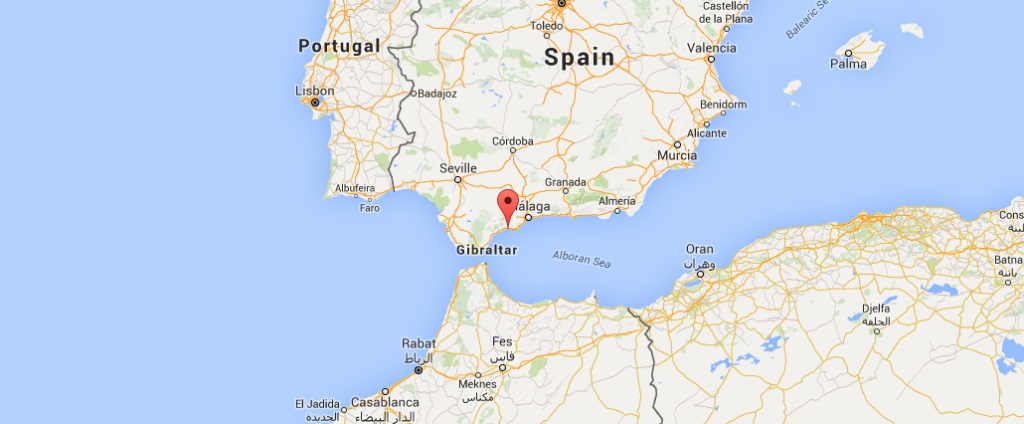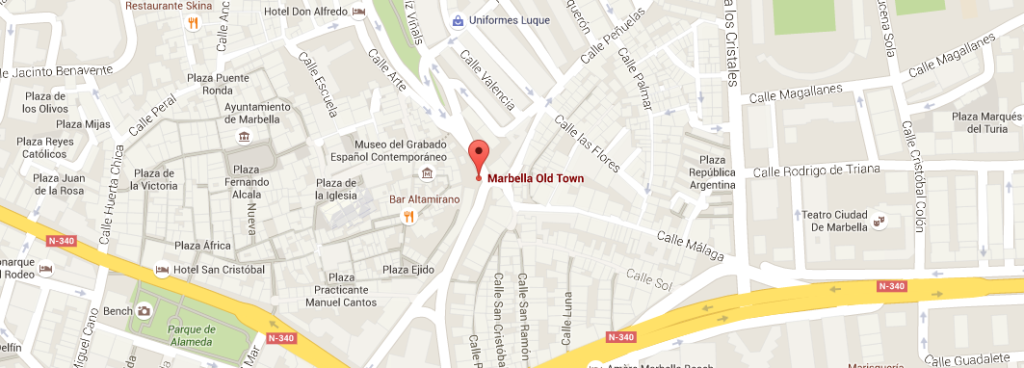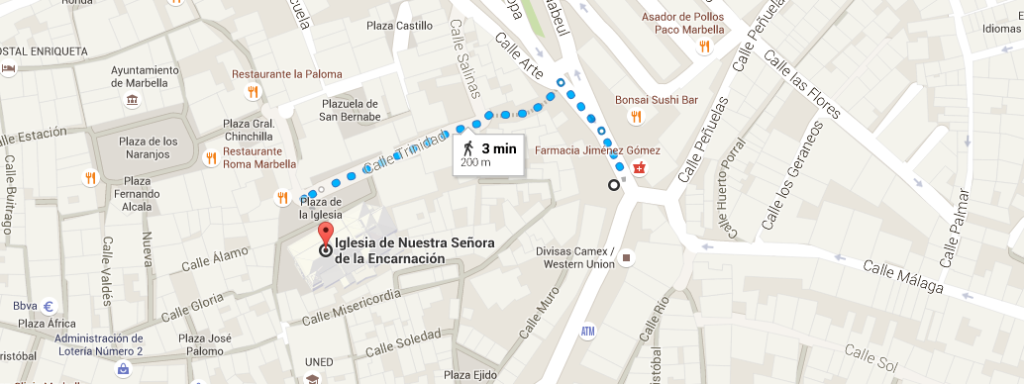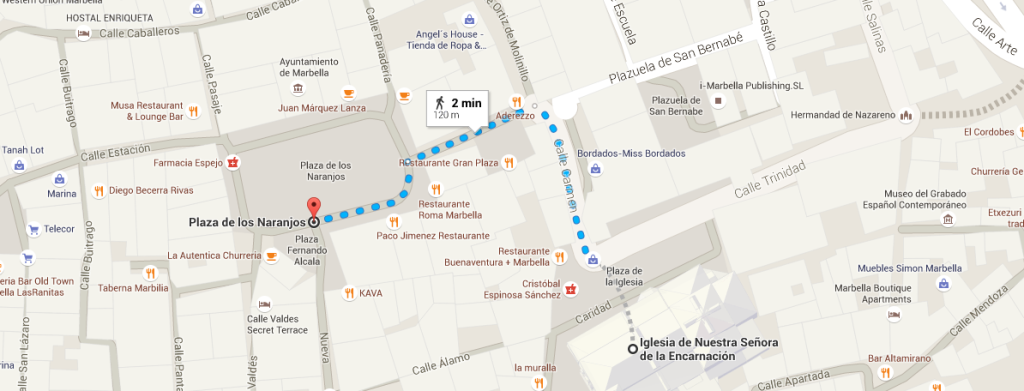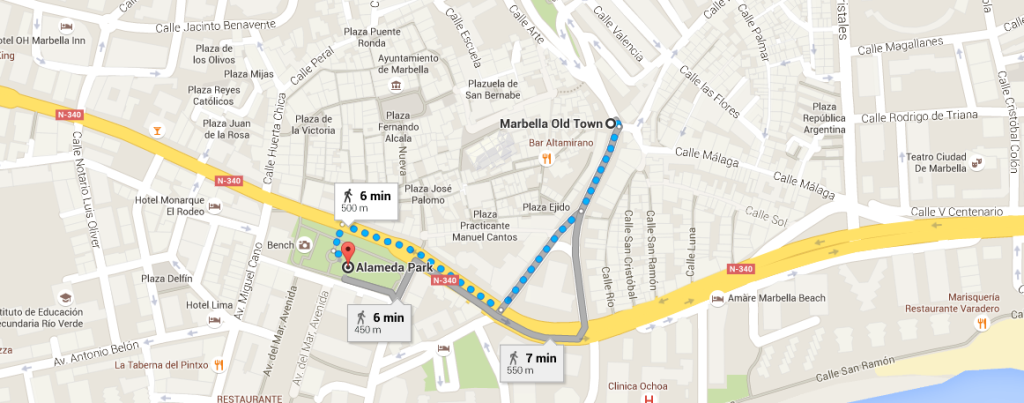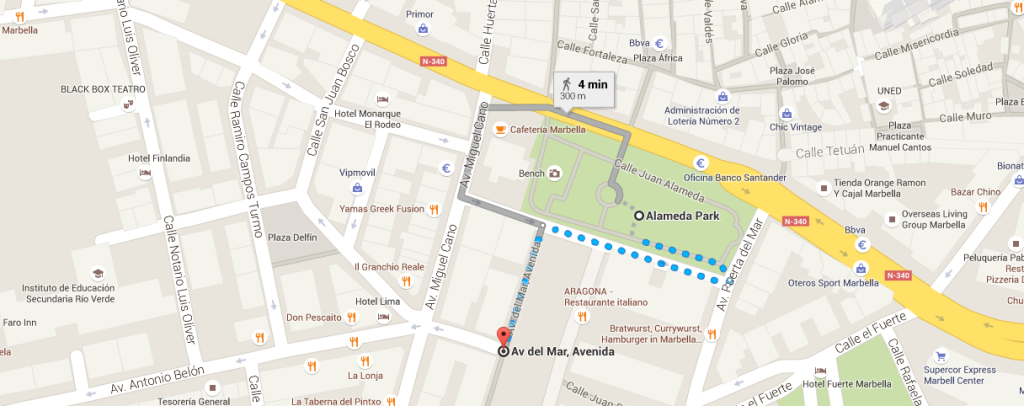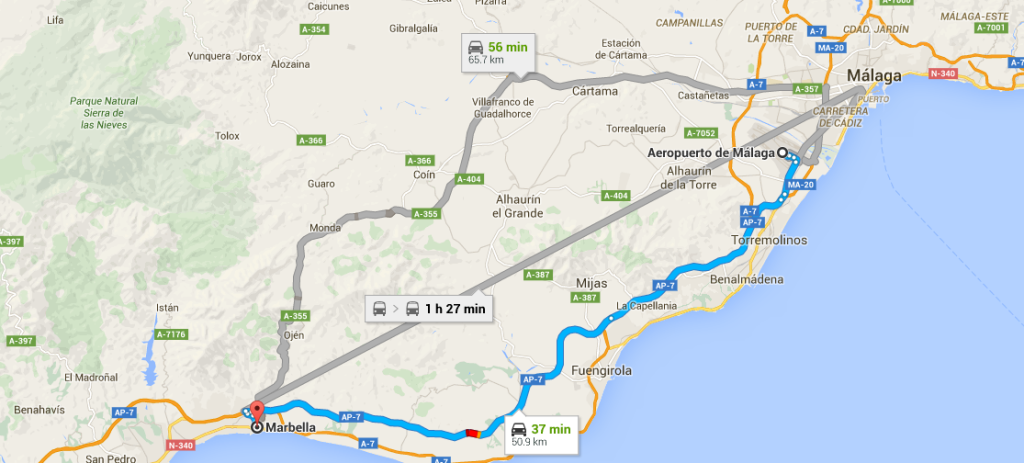If you have honed in on Spain’s Costa del Sol as the perfect retreat for that time of life when the rat race of the working world is a distant memory and the kids have flown the nest, then you might be interested in exploring some of the region’s coastal towns on one of your holidays there.
We have put together some suggestions here for a daytrip to Marbella. A charming town in the Malaga Province, Marbella is not difficult to reach if you’re staying in one of those inland villages that offer visitors a taste of that authentic ‘malagueño’ culture and lifestyle.
Old Town
Former business travellers are probably well-acquainted with the experience of going to foreign cities and seeing little more than the inside of a hotel room or conference facility. Now’s the time to immerse yourself in the culture and traditions of your destination – and Marbella’s Old Town is the perfect place to do just that.
Here you’ll find a layout of narrow, irregular streets dating from the 16th century, along with the remnants of the old city walls from Moorish times. Allow yourself to get lost in the streets and you’re sure to happen upon an interesting shop or a lovely café for tapas. No traffic is allowed in the old town, so you can wander at ease.
Iglesia Mayor de la Encarnación
While you’re in the Old Town, wander over to the Iglesia Mayor de la Encarnación. Built in the 16th and 17th century, the church towers over the Plaza de la Iglesia. Inside, a series of graceful, soaring arches leads up to an elaborate golden altar. Along the walls there are niches dedicated to the saints, featuring life-size and fully clothed statues. Peaceful and serene, this church is the perfect place to sit and reflect before you continue exploring Marbella.
Plaza de los Naranjos
Before you leave the Old Town, stop by the Plaza de los Naranjos, literally “Orange Plaza” in English. Dating from 1485, when the Christians captured Marbella from the Moors, the plaza was intended to form the central hub of the city. Typical whitewashed Andalusian buildings frame the square on all sides, and in the centre you’ll find a Renaissance fountain surrounded orange trees, which give the plaza its name. On an early spring day when the trees are in bloom, their glorious perfume wafts over the entire square. Between the trees, you’ll find café tables with colourful umbrellas – the perfect place for a cool drink with your traveling companion.
Alameda Park
Next, make your way out of the Old Town’s winding streets and south across the N-340 to Alameda Park, about a two-minute walk. This modest-sized park is lush with tropical plants and trees – certainly a departure from the classic English garden. The wide pathways are ideal for a leisurely stroll, and the beautifully tiled Spanish benches are perfect for a shady rest. You can also hire a horse and carriage from here if you’d like to explore Marbella’s streets the old-fashioned way.
Avenida del Mar
On the southern side of the park, you’ll find the Avenida del Mar, a pedestrian-only promenade that leads from the park to the sea. Art aficionados will love the open-air display of ten bronze sculptures by Salvador Dali, a famous surrealist artist from Catalonia. In typical Dali style, the sculptures are both bold and intriguing. Adjacent to the Avenida is a good shop and gallery, where you can purchase prints and photographs of Dali’s work along with that of Pablo Picasso.
El Trenecito Train Tour
Since you’ve been on your feet all day, why not explore a little of Marbella by train? Hourly train tours leave from Calle del Faro (the town’s lighthouse), about 300 metres from the end of Avenida del Mar. In about 30 minutes, the train shows you some of Marbella’s top sights, including the Represa Park, the Malaga Bridge and the Bonsai Museum.
El Paseo Maritimo
End your day in Marbella with a stroll along the Paseo Maritimo, a two-kilometre marble-paved walkway with superb sea views that begins at the Avenida del Mar. The Paseo is lined with palm trees and over 40 restaurants – perfect timing if you’re peckish after a day of sightseeing. If you time it just right, you might even be treated to a Mediterranean sunset before you leave Marbella.
How to Get There
To get to Marbella from London, your best bet is to fly into Malaga, about a three-hour flight. Once you’ve landed, get your holiday off to a relaxing start by arranging for a Malaga airport transfer to collect you from Arrivals and take you to your accommodation
If you’re staying in a rural area and you want to get into Marbella, you have several options available. Renting a car will give you the most freedom, but you may struggle to find a place to park, particularly near the Old Town.
Alternatively, you can use the Malaga Cercanias network, a system of interurban trains between Malaga and nearby municipalities. The system consists of 70 km of railway and 24 stations, so check if there’s a station near your accommodation. The bus network, which serves the different towns of Malaga province, is also an excellent low-cost alternative.


